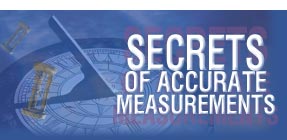 |
 |
 |
| RU |
|
Login
Newsletters
There is no newsletter category found. Information
|
Testing broadband devices at their limits with DOCSIS 3.1 test setups from Rohde & Schwarz 04/27/2015 Rohde & Schwarz is now offering its first test solutions for developing and manufacturing DOCSIS 3.1 based consumer electronics equipment and components. These test setups include an R&S CLGD cable load generator and an R&S FSW signal and spectrum analyzer equipped with a new downstream signal analysis option. Transmitting high-definition 4K UHD contents to consumers' households requires large bandwidths. Capacity requirements for IP based services are also on the rise. This is where new broadband technologies such as DOCSIS 3.1 come in. The new DOCSIS 3.1 standard enables data rates of several Gbit/s for IP-based transmissions in cable networks. Rohde & Schwarz is offering the R&S CLGD signal generator for network component development and receiver tests. The generator can simulate channel loading scenarios composed of DOCSIS 3.1, digital (J.83/A/B/C) and analog TV signals in the downstream, and DOCSIS 3.1 along with DOCSIS 3.0 signals in the upstream. Typical applications for the signal generator include broadband tuner development for the new generation of cable modems and comprehensive receiver tests. It is also well suited for qualification tests on amplifiers and electrical/optical converters with DOCSIS 3.1 signals. With a frequency range of 47 MHz to 1218 MHz (optionally up to 1794 MHz) for the downstream, the R&S CLGD can simultaneously generate up to six 192 MHz DOCSIS 3.1 channels or up to 160 QAM channels. It is also possible to use a combination of both channel types. Each individual channel is continuously modulated in real time, enabling bit error rate (BER) measurements on each channel across the entire frequency range without requiring any changes to existing configurations. To create real-world conditions, the signal generator also simulates different types of interference such as additive white Gaussian noise (AWGN), impulsive noise, microreflections (in line with SCTE 40), narrowband ingress and 50 Hz/60 Hz AC hum. The R&S FSW-K192 option for the R&S FSW signal and spectrum analyzer makes it possible to analyze DOCSIS 3.1 OFDM downstream signals. The software offers features that greatly simplify precise DUT characterization and troubleshooting and carry out signal analysis fast and reliably. Typical DOCSIS 3.1 signal parameters are detected automatically, allowing users without detailed knowledge of the standard to carry out all measurements at the press of a button. Due to its wide dynamic range, the R&S FSW signal and spectrum analyzer with the R&S FSW-K192 option can measure the key parameters determining signal quality with great accuracy. With a residual modulation error ratio (MER) of 57 dB, the R&S FSW8 sets the current industry standard. A wide choice of graphical displays is available for visualizing measurement results; for example, the MER value across all OFDM carriers of a DOCSIS 3.1 signal can be shown. This makes it easy to identify interferers and other influences in the transmission channel. The R&S FSW-K192 option can also decode detected symbols (LDPC and BCH decoding), enabling BER measurements on the DOCSIS 3.1 channels. Company profile: Rohde & Schwarz Related Information:
Companies' news
KIPiS articles
|
Current issue
Search
|
|
|
| © "Test & Measuring Instruments and Systems" ("KIPiS"), 2000-2024 |

























